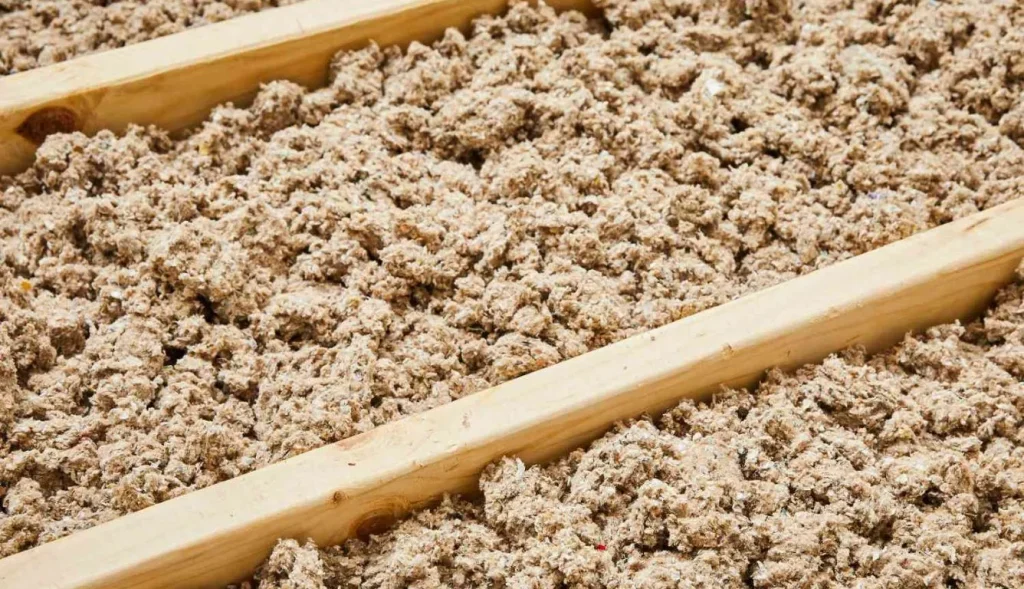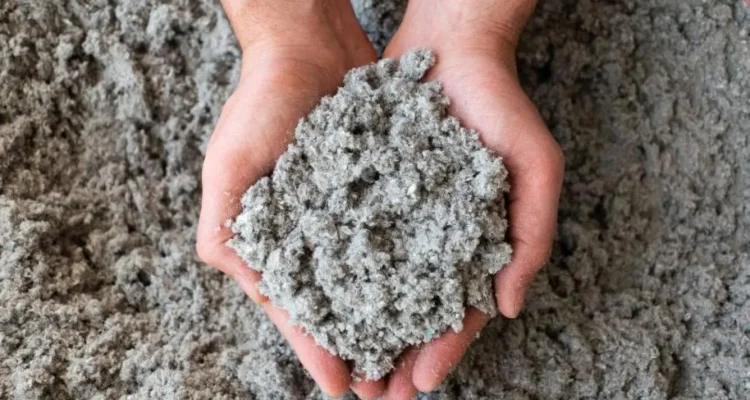Introduction
Identifying the type of insulation in your home is crucial for your health and safety. Among the various types of insulation, cellulose and asbestos are two common ones. While cellulose insulation is generally safe, asbestos poses serious health risks. Understanding how to differentiate between them is essential for homeowners.

What is Cellulose Insulation?
Cellulose insulation is made from recycled paper products, primarily newspapers. It is treated with fire-retardant chemicals to enhance safety. This type of insulation is popular due to its eco-friendly nature and effective insulating properties.
Composition and Characteristics
Cellulose insulation is composed of small, fibrous particles. It is usually grayish or brownish and has a loose, fluffy texture. When installed, it fills spaces well, providing excellent thermal performance.
Benefits of Cellulose Insulation
- Eco-Friendly: Made from recycled materials.
- Effective Insulation: Provides good thermal and sound insulation.
- Fire-Resistant: Treated with fire-retardant chemicals.
What is Asbestos Insulation?
Asbestos insulation, on the other hand, consists of natural mineral fibers that are highly heat-resistant. Historically, it was used extensively in buildings for its fireproofing and insulating properties.
Composition and Characteristics
Asbestos insulation can appear in various forms, including loose-fill, boards, and spray-on coatings. It often has a fibrous, flaky texture and can be white, gray, or brown.
Risks Associated with Asbestos
Asbestos is highly hazardous when its fibers become airborne and inhaled. Prolonged exposure can lead to serious health issues such as asbestosis, lung cancer, and mesothelioma.
Visual Differences Between Cellulose and Asbestos Insulation
Color and Texture
- Cellulose: Grayish-brown, fluffy, and loose.
- Asbestos: White, gray, or brown, with a fibrous, flaky texture.
Common Forms and Applications
- Cellulose: Used in attics and walls, often seen as loose-fill or dense-pack.
- Asbestos: Found in older homes, used in insulation boards, pipe wraps, and spray-on coatings.
Testing Methods for Identification
Professional Laboratory Analysis
For definitive identification, sending a sample to a certified laboratory is the most reliable method. Professionals use specialized techniques to detect asbestos fibers.
DIY Testing Kits
Homeowners can use DIY testing kits to collect samples safely. These kits typically include instructions and safety gear. However, professional analysis is recommended for accurate results.
Health Risks of Asbestos Exposure
Short-Term and Long-Term Effects
Exposure to asbestos can cause respiratory issues, and even brief exposure may lead to significant health problems. The effects can manifest years after the initial exposure.
Asbestos-Related Diseases
Diseases such as asbestosis, lung cancer, and mesothelioma are directly linked to asbestos exposure. These conditions are often severe and life-threatening.
Safety Precautions When Handling Insulation
Personal Protective Equipment (PPE)
When dealing with any type of insulation, especially if asbestos is suspected, wearing proper PPE, including masks, gloves, and coveralls, is essential.
Proper Handling and Disposal Procedures
Asbestos should never be handled without proper training. If removal is necessary, it should be performed by certified professionals who follow strict disposal guidelines to prevent contamination.
Hiring Professionals for Inspection
When to Call an Expert
If you suspect asbestos in your insulation, contact a professional immediately. They have the tools and knowledge to handle the situation safely.
What to Expect During an Inspection
Professionals will conduct a thorough inspection, taking samples for analysis and providing recommendations based on their findings.
Legal Regulations and Guidelines
Asbestos Abatement Laws
Many regions have strict laws regarding the handling and removal of asbestos. These regulations are designed to protect public health.
Certification Requirements for Inspectors
Inspectors and removal specialists must be certified to handle asbestos safely. Certification ensures they follow best practices and legal requirements.
Alternatives to Asbestos Insulation
Modern Insulation Materials
Modern alternatives to asbestos include fiberglass, foam board, and spray foam. These materials offer safe and effective insulation without the health risks.
Benefits of Asbestos-Free Products
Using asbestos-free insulation reduces health risks and often provides better energy efficiency and fire resistance.
Retrofitting and Upgrading Insulation
Safe Removal of Asbestos Insulation
If your home contains asbestos, it’s crucial to have it safely removed by professionals. They will ensure the area is decontaminated and safe for new insulation.
Installing New Insulation
After asbestos removal, you can install new, safer insulation. Options like cellulose, fiberglass, and spray foam are popular choices.
Cost Considerations
Expense of Testing and Removal
Asbestos testing and removal can be costly. However, the investment is worth it for the safety and peace of mind it provides.
Cost of Replacement Insulation
The cost of new insulation varies depending on the material and the area to be covered. Cellulose is generally affordable and effective.
Environmental Impact
Sustainability of Cellulose Insulation
Cellulose insulation is made from recycled materials, making it an environmentally friendly option. It also contributes to energy efficiency in homes.
Environmental Hazards of Asbestos
Asbestos poses significant environmental risks. Its fibers can contaminate air and water, leading to long-term ecological damage.
Case Studies and Real-Life Examples
Successful Identification and Removal Projects
Several homeowners have successfully identified and removed asbestos from their homes, significantly improving their indoor air quality and safety.
Lessons Learned from Asbestos Exposure Incidents
Past incidents of asbestos exposure highlight the importance of proper identification and handling. Learning from these cases can help prevent future risks.
FAQs
How can I visually distinguish between cellulose and asbestos insulation?
Cellulose insulation is usually grayish-brown and fluffy, while asbestos insulation appears white, gray, or brown and has a fibrous, flaky texture.
What are the health risks associated with asbestos exposure?
Asbestos exposure can lead to serious health issues such as asbestosis, lung cancer, and mesothelioma, which are often life-threatening.
How much does professional asbestos testing cost?
The cost of professional asbestos testing varies but generally ranges from $300 to $800, depending on the number of samples and the complexity of the analysis.
What should I do if I suspect asbestos in my home?
If you suspect asbestos in your home, contact a certified professional immediately for testing and advice on safe removal.
Are there any safe DIY methods for asbestos removal?
No, DIY asbestos removal is not recommended. Asbestos should only be handled by certified professionals to ensure safety and compliance with legal regulations.
Conclusion
Identifying the type of insulation in your home is essential for ensuring safety. While cellulose insulation is safe and effective, asbestos insulation poses severe health risks. If you suspect asbestos in your home, it’s crucial to seek professional help for testing and removal. By taking the right steps, you can protect your health and create a safe living environment.


Congratulation!